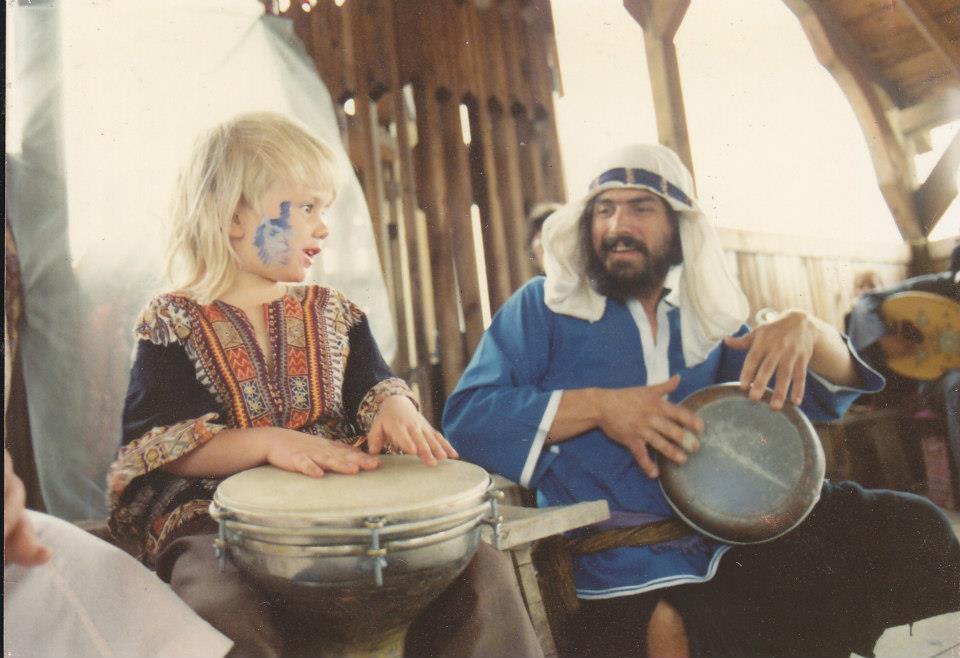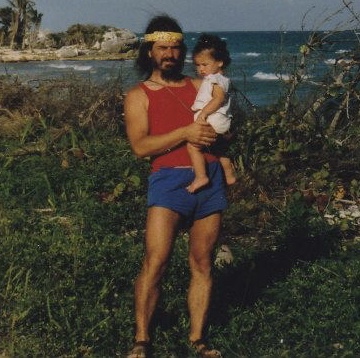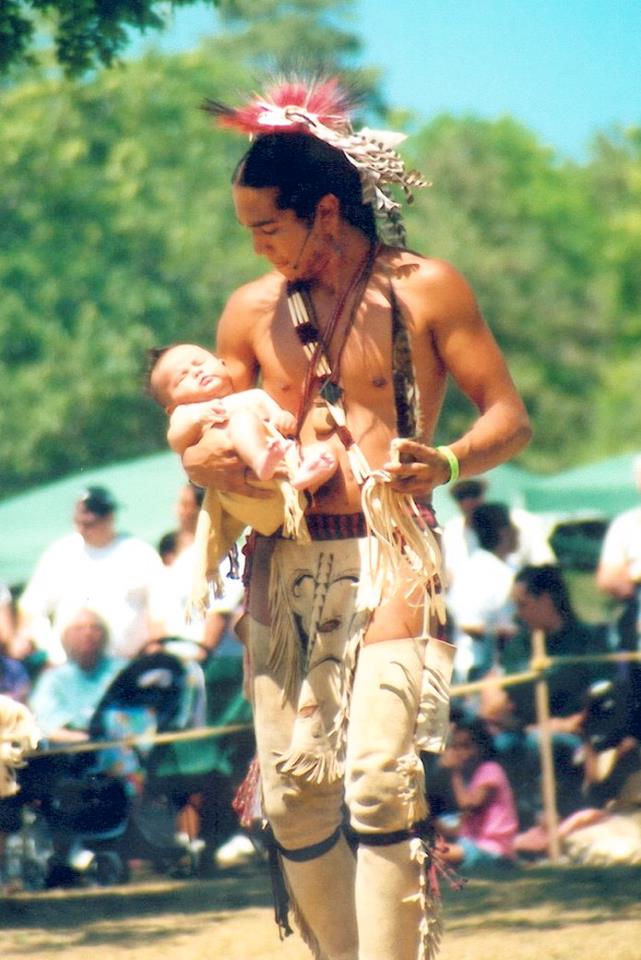Kristoffer Kristofferson (born June 22, 1936) is an American retired singer-songwriter and actor. Among his songwriting credits are the songs “Me and Bobby McGee“, “For the Good Times“, “Sunday Mornin’ Comin’ Down“, and “Help Me Make It Through the Night“, all of which were hits for other artists. Kristofferson composed his own songs and collaborated with Nashville songwriters such as Shel Silverstein.
In 1985, Kristofferson joined fellow country artists Waylon Jennings, Willie Nelson and Johnny Cash in forming the country music supergroup the Highwaymen, and formed a key creative force in the outlaw country music movement that eschewed the Nashville music machine in favor of independent songwriting and producing. In 2004, Kristofferson was inducted into the Country Music Hall of Fame. As an actor, he is known for his roles in Pat Garrett & Billy the Kid (1973), Blume in Love (1973), Alice Doesn’t Live Here Anymore (1974), A Star Is Born (1976) (which earned him a Golden Globe Award for Best Actor), Convoy (1978), Heaven’s Gate (1980), Lone Star (1996), Stagecoach (1986), and the Blade film trilogy (1998–2004).
see full post...Hermeto Pascoal (born June 22, 1936) is a Brazilian composer and multi-instrumentalist. He was born in Lagoa da Canoa, Alagoas, Brazil. Pascoal is a significant figure in the history of Brazilian music, mainly known for his abilities in orchestration and improvisation, as well as being a record producer and contributor to many Brazilian and international albums. Pascoal comes from northeastern Brazil, an area that lacked electricity at the time he was born. He learned the accordion from his father and practised for hours indoors as, being albino, he was incapable of working in the fields with the rest of his family. Hermeto’s career began in 1964 with appearances on several Brazilian recordings alongside relatively unknown groups. These now-classic albums and the musicians involved (Edu Lobo, Elis Regina, Cesar Camargo Mariano) established widely influential new directions in post-bossa nova Brazilian jazz.
In 1966, he played in the Sambrasa Trio, with Airto Moreira and Humberto Clayber; they released only one album, Em Som Maior. Then he joined Trio Novo (Airto Moreira, Heraldo do Monte, Theo de Barros) and in 1967 the group, renamed Quarteto Novo, released an album that launched the careers of Pascoal and Moreira. Pascoal would then go on to join the multi-faceted group Brazilian Octopus.
see full post...Ray Mantilla, a conguero, timbalero, and bandleader who was one of the most prolific hand percussionists in both Latin jazz and jazz in general, died March 21 at New York-Presbyterian/Columbia University Medical Center in Manhattan. He was 85.
His death was confirmed by WBGO, who spoke with Mantilla’s brother Kermit. Cause of death was given as complications from lymphoma.
Hailing from New York City’s South Bronx—an all-important crucible of salsa and other Afro-Latin musical forms—Mantilla gained his first professional success while playing congas in the 1960s Latin-jazz band of flutist Herbie Mann. He also did early-1970s stints with Max Roach’s M’Boom and Art Blakey’s Jazz Messengers before breaking through as a leader with his Space Station ensemble in the late ’70s and early ’80s.
He released nine albums as a leader (with a tenth, Rebirth, scheduled for release later this year). However, he appeared as a sideman on over 160 other albums, the second most recorded conguero in the history of jazz—behind only Ray Barretto, his friend since childhood.
see full post...Katherine Dunham ( June 22, 1909 – May 21, 2006 Chicago) was an African-American dancer, choreographer, creator of the Dunham Technique, author, educator, anthropologist, and social activist. Dunham had one of the most successful dance careers in African-American and European theater of the 20th century, and directed her own dance company for many years. She has been called the “matriarch and queen mother of black dance.”
While a student at the University of Chicago, Dunham also performed as a dancer and ran a dance school. Receiving a fellowship, she went to the Caribbean to study dance and ethnography. She later returned to graduate and submitted a master’s thesis in anthropology. She did not complete the other requirements for that degree, however. She realized that her professional calling was performance.
At the height of her career in the 1940s and 1950s, Dunham was renowned throughout Europe and Latin America and was widely popular in the United States. The Washington Post called her “dancer Katherine the Great”. For almost 30 years she maintained the Katherine Dunham Dance Company, the only self-supported American black dance troupe at that time. Over her long career, she choreographed more than ninety individual dances. Dunham was an innovator in African-American modern dance as well as a leader in the field of dance anthropology, or ethnochoreology. She also developed the Dunham Technique, a method of movement to support her dance works.
see full post...In this stunning vista, based on image data from the Hubble Legacy Archive, distant galaxies form a dramatic backdrop for disrupted spiral galaxy Arp 188, the Tadpole Galaxy. The cosmic tadpole is a mere 420 million light-years distant toward the northern constellation of the Dragon (Draco). Its eye-catching tail is about 280 thousand light-years long and features massive, bright blue star clusters. One story goes that a more compact intruder galaxy crossed in front of Arp 188 – from right to left in this view – and was slung around behind the Tadpole by their gravitational attraction. During the close encounter, tidal forces drew out the spiral galaxy’s stars, gas, and dust forming the spectacular tail. The intruder galaxy itself, estimated to lie about 300 thousand light-years behind the Tadpole, can be seen through foreground spiral arms at the upper right. Following its terrestrial namesake, the Tadpole Galaxy will likely lose its tail as it grows older, the tail’s star clusters forming smaller satellites of the large spiral galaxy.

Nils Hilmer Lofgren (born June 21, 1951) is an American rock musician, recording artist, songwriter, and multi-instrumentalist. Along with his work as a solo artist, he has been a member of Bruce Springsteen‘s E Street Band since 1984, a member of Crazy Horse, and founder/frontman of the band Grin. Lofgren was inducted into the Rock and Roll Hall of Fame as a member of the E Street Band in 2014.
Lofgren was born in Chicago in 1951 to an Italian mother and a Swedish father. When he was a young child, the family moved to the Washington, D.C., suburb of Bethesda, Maryland. Lofgren’s first instrument was classical accordion, beginning at age five, which he studied seriously for ten years. After studying classical music and jazz, throughout his youth, Lofgren switched his emphasis to rock music, and focused on the piano and the guitar.
see full post...Boris Claudio “Lalo” Schifrin (born June 21, 1932) is an Argentine-American pianist, composer, arranger and conductor. He is best known for his large body of film and TV scores since the 1950s, including Cool Hand Luke, the “Theme from Mission: Impossible“, Bullitt, Dirty Harry, and Enter the Dragon. He has received five Grammy Awards and six Academy Awards nominations. Associated with the jazz music genre, Schifrin is also noted for his collaborations with Clint Eastwood from the late 1960s to the 1980s, particularly the Dirty Harry series of films.
Schifrin was born in Buenos Aires, to a Jewish family. His father, Luis Schifrin, led the second violin section of the orchestra at the Teatro Colón for three decades. At the age of six, Schifrin began a six-year course of study on piano with Enrique Barenboim, the father of pianist and conductor Daniel Barenboim. Schifrin began studying piano with the Greek-Russian expatriate Andreas Karalis, former head of the Kyiv Conservatory, and harmony with Argentine composer Juan Carlos Paz. During this time, Schifrin also became interested in jazz.
Although Schifrin studied sociology and law at the University of Buenos Aires, it was music that captured his attention. At age 20, he successfully applied for a scholarship to the Conservatoire de Paris. At night, he played jazz in the Paris clubs. In 1955, Schifrin played piano with Argentine bandoneon giant Ástor Piazzolla and represented his country at the International Jazz Festival in Paris.
see full post...June 21, 1914 in Roswell, New Mexico.
The role of a jazz bassist has evolved through the history of the music and could be generalized as an increase in input into the music above and beyond just timekeeping. It is true that perhaps some bassists get carried away, hiring other bassists to back them up while they play solos. Or perhaps that’s what they all should be doing. Listeners who agree with the latter musical dogma, or simply enjoy a lively bassist, can count in Booker Collins as an early example of mucho rather than macho bass. By the mid-’30s, when he was keeping very good company indeed in the groups of the fine pianist Mary Lou Williams, a typical Collins performance would have a remarkable stature when contrasted with what other bassists were playing in similar groups. In fact, considering that the bassist in question hailed from Roswell, NM, it is no doubt acceptable to describe him as an alien among his contemporary rhythm section players. Collins was indeed a westerner, emerging from the New Mexico Military Institute to play in Bat Brown’s Band, an aptly named territorial band for a territory whose night skies were dotted with the creatures. Trombonist Bert Johnson was another playing partner of Collins, both of them going for a fattened midsection as if preparing for film roles as bouncers. He was only 16 when he was cutting sides with Williams, part of a busy and sometimes even thriving Chicago recording scene in which jazz, rhythm & blues, and just plain blues players mingled and collaborated for independent label releases. In 1934, his break came when he got into the band of Andy Kirk and he stayed in this active group for the next decade, often playing alongside his old pal Williams in the rhythm section. Kirk was actually adding an instrument to his lineup as well as a player: The hiring represented the bandleader’s decision to add double bass to the rhythm section, leaving the tuba in the closet to collect whatever tubas collect. Most bassists of Collins‘ generation doubled on the horn and he was no exception. Knowing what tubas collect firsthand, he was probably happy to leave it behind when the Kirk band hit the road. The bassist’s final job of note was with Chicago guitarist and drummer Floyd Smith‘s trio, a stint that lasted from 1946 until the early ’50s, when this great bass man finally laid his big instrument down in terms of full-time playing; he made a few appearances at festival occasions in the ensuing decades and was also in Chicago recording studios in the late ’50s cutting sides for independent labels. Perhaps figuring that it was insane to stay out of the music business, he joined a combo called the Shades of Rhythm to backup blues singer Mad Man Jones on the demanding “Come Here.” Collins had been involved with this group, whose personnel shifted like the tide along the Chicago lakeside, since 1952 when he was part of a version that took the risk of cutting sides for the Chance label.
see full post...Nehemiah Curtis “Skip” James (June 9, 1902 – October 3, 1969) was an American Delta blues singer, guitarist, pianist and songwriter.
His guitar playing is noted for its dark, minor-key sound, played in an open D-minor tuning with an intricate fingerpicking technique. James first recorded for Paramount Records in 1931, but these recordings sold poorly, having been released during the Great Depression, and he drifted into obscurity.
After a long absence from the public eye, James was rediscovered in 1964 by blues enthusiasts including John Fahey, helping further the blues and folk music revival of the 1950s and early 1960s. During this period, James appeared at folk and blues festivals, gave concerts around the country, and recorded several albums for various record labels. His songs have influenced generations of musicians and have been adapted by numerous artists. He has been hailed as “one of the seminal figures of the blues.”
James was born near Bentonia, Mississippi. His father was a bootlegger who reformed and became a preacher. As a youth, James heard local musicians, such as Henry Stuckey, from whom he learned to play the guitar, and the brothers Charlie and Jesse Sims. James began playing the organ in his teens. He worked on road construction and levee-building crews in Mississippi in the early 1920s and wrote what is perhaps his earliest song, “Illinois Blues”, about his experiences as a laborer. He began playing the guitar in open D-minor tuning.
see full post...If you had a brand new state-of-the-art telescope facility, what would you look at first? Researchers at the SPECULOOS Southern Observatory — which comprises four small telescopes, each with a 1-metre primary mirror — chose to view the Lagoon Nebula. This magnificent picture is the result, and is one of the SPECULOOS’ first ever observations. The nebula is a cloud of dust and gas in our galaxy where new stars are being born, and is found roughly 5000 light-years from us. This striking image is made even more impressive by the fact that the SPECULOOS isn’t actually designed to study nebulae. The name says it all — SPECULOOS, the Search for habitable Planets EClipsing ULtra-cOOl Stars. In other words, the primary mission of this telescope facility is to find Earth-like planets orbiting faint nearby stars. The candidates it discovers will be passed over to larger telescopes, such as ESO’s forthcoming Extremely Large Telescope (ELT), to be studied in more detail. SPECULOOS is located at ESO’s Paranal Observatory in the Atacama Desert of Chile, taking full advantage of the location’s dark skies, ideal atmospheric conditions, and the support systems ESO has there, from telescope infrastructure to staff accommodation. It will have a partner, the SPECULOOS Northern Observatory, in the Canary Islands, which will hunt for planets in the northern skies not visible from Chile. Together they promise to vastly expand our knowledge of the exoplanets in our neighbourhood.

Leslie Johnson (June 20, 1933 – August 22, 2018), better known as Lazy Lester, was an American blues musician who sang and played the harmonica and guitar. His career spanned the 1950s to 2018.
Best known for regional hits recorded with Ernie Young’s Nashville-based Excello Records, Lester also contributed to songs recorded by other Excello artists, including Slim Harpo, Lightnin’ Slim, and Katie Webster. Cover versions of his songs have been recorded by (among others) the Kinks, the Flamin’ Groovies, Freddy Fender, Dwight Yoakam, Dave Edmunds, Raful Neal, Anson Funderburgh, and the Fabulous Thunderbirds. In the comeback stage of his career (since the late 1980s) he recorded new albums backed by Mike Buck, Sue Foley, Gene Taylor, Kenny Neal, Lucky Peterson, and Jimmie Vaughan.
Lester started playing the guitar around age 11 and began performing in his teens around Baton Rouge with Raful Neal, later co-founding the Rhythm Rockers. In the mid-1950s, Lester was on the margins of the Louisiana blues scene. According to Rolling Stone (February 23, 2006), Buddy Guy, before moving to Chicago, had played in Louisiana with some of the old masters: Lightnin’ Hopkins, Lazy Lester, Slim Harpo. When Guy left for Chicago, in 1957, Lester replaced him, on guitar, in a local band – even though Lester, at that time, did not own such an instrument.
see full post...Eric Allan Dolphy Jr. (June 20, 1928 – June 29, 1964) was an American jazz alto saxophonist, bass clarinetist and flautist. On a few occasions, he also played the clarinet and piccolo. Dolphy was one of several multi-instrumentalists to gain prominence in the same era. His use of the bass clarinet helped to establish the instrument within jazz. Dolphy extended the vocabulary and boundaries of the alto saxophone, and was among the earliest significant jazz flute soloists.
His improvisational style was characterized by the use of wide intervals, in addition to employing an array of extended techniques to emulate the sounds of human voices and animals. He used melodic lines that were “angular, zigzagging from interval to interval, taking hairpin turns at unexpected junctures, making dramatic leaps from the lower to the upper register.” Although Dolphy’s work is sometimes classified as free jazz, his compositions and solos were often rooted in conventional (if highly abstracted) tonal bebop harmony. On June 29, Dolphy died after falling into a diabetic coma. While certain details of his death are still disputed, it is largely accepted that he fell into a coma caused by undiagnosed diabetes.
see full post...
Chester Burton “Chet” Atkins (June 20, 1924 – June 30, 2001), known as “Mr. Guitar” and “The Country Gentleman“, was an American musician, occasional vocalist, songwriter, and record producer who, along with Owen Bradley and Bob Ferguson, helped create the Nashville sound, the country music style which expanded its appeal to adult pop music fans. He was primarily known as a guitarist. He also played the mandolin, fiddle, banjo, and ukulele.
Atkins’s signature picking style was inspired by Merle Travis. Other major guitar influences were Django Reinhardt, George Barnes, Les Paul, and, later, Jerry Reed. His distinctive picking style and musicianship brought him admirers inside and outside the country scene, both in the United States and abroad. Atkins spent most of his career at RCA Victor and produced records for the Browns, Hank Snow, Porter Wagoner, Norma Jean, Dolly Parton, Dottie West, Perry Como, Floyd Cramer, Elvis Presley, the Everly Brothers, Eddy Arnold, Don Gibson, Jim Reeves, Jerry Reed, Skeeter Davis, Waylon Jennings, Roger Whittaker, and many others.
Rolling Stone credited Atkins with inventing the “popwise ‘Nashville sound’ that rescued country music from a commercial slump,” and ranked him number 21 on their list of “The 100 Greatest Guitarists of All Time”. Among many other honors, Atkins received 14 Grammy Awards and the Grammy Lifetime Achievement Award. He also received nine Country Music Association awards for Instrumentalist of the Year. He was inducted into the Rock & Roll Hall of Fame, the Country Music Hall of Fame and Museum, and the Musicians Hall of Fame and Museum. George Harrison was also inspired by Chet Atkins; early Beatles songs such as “All My Loving” show the influence.
see full post...







